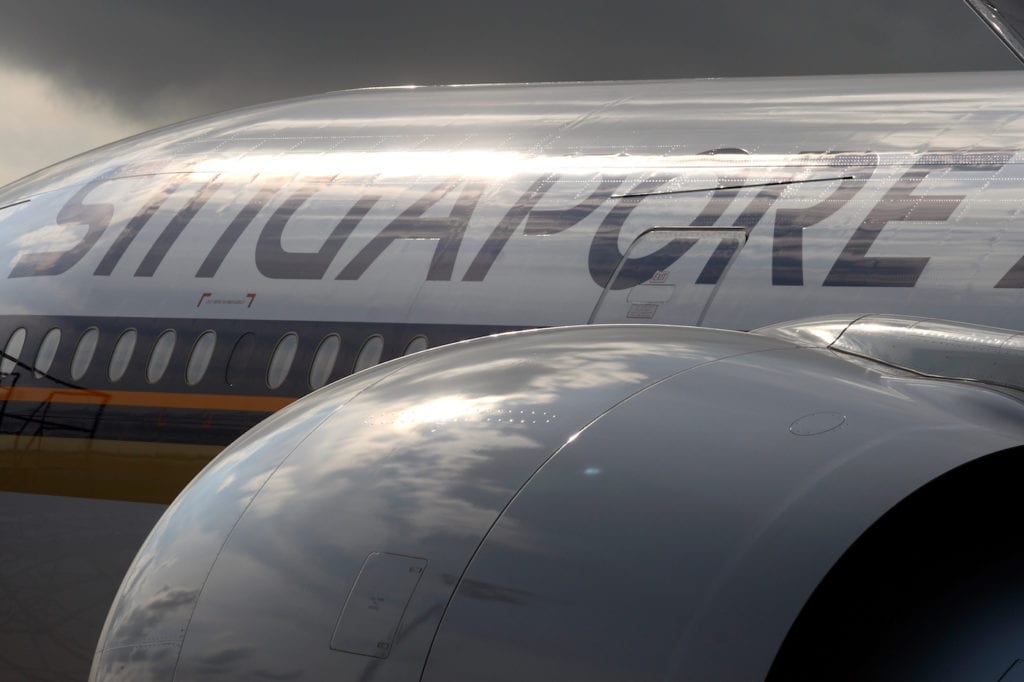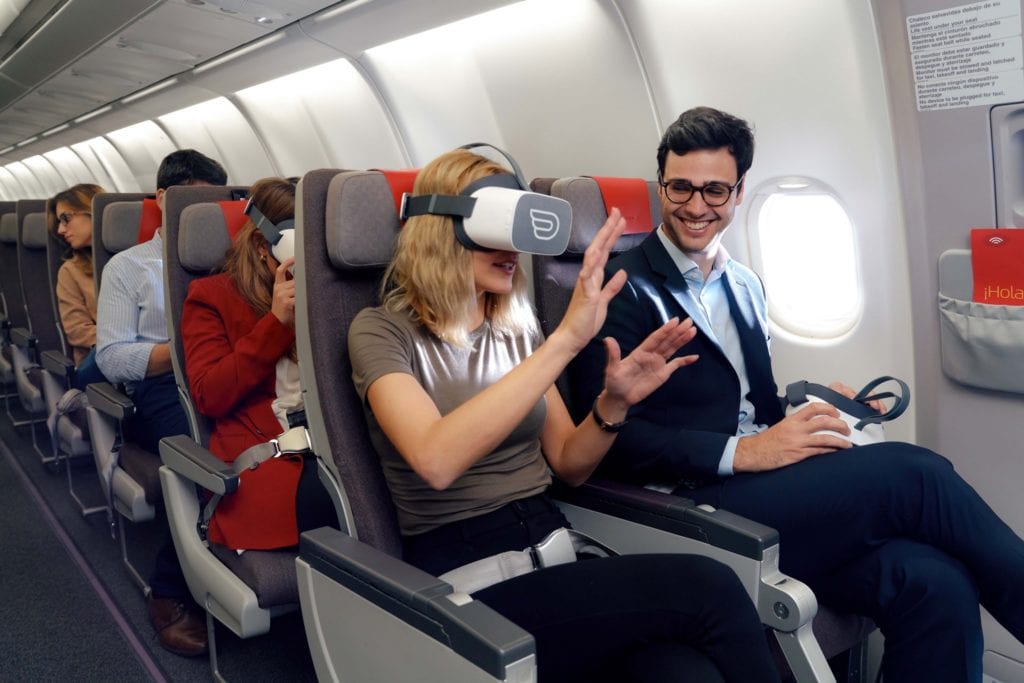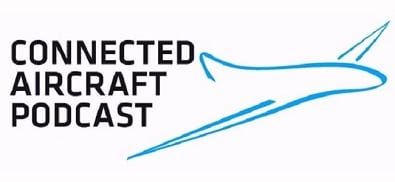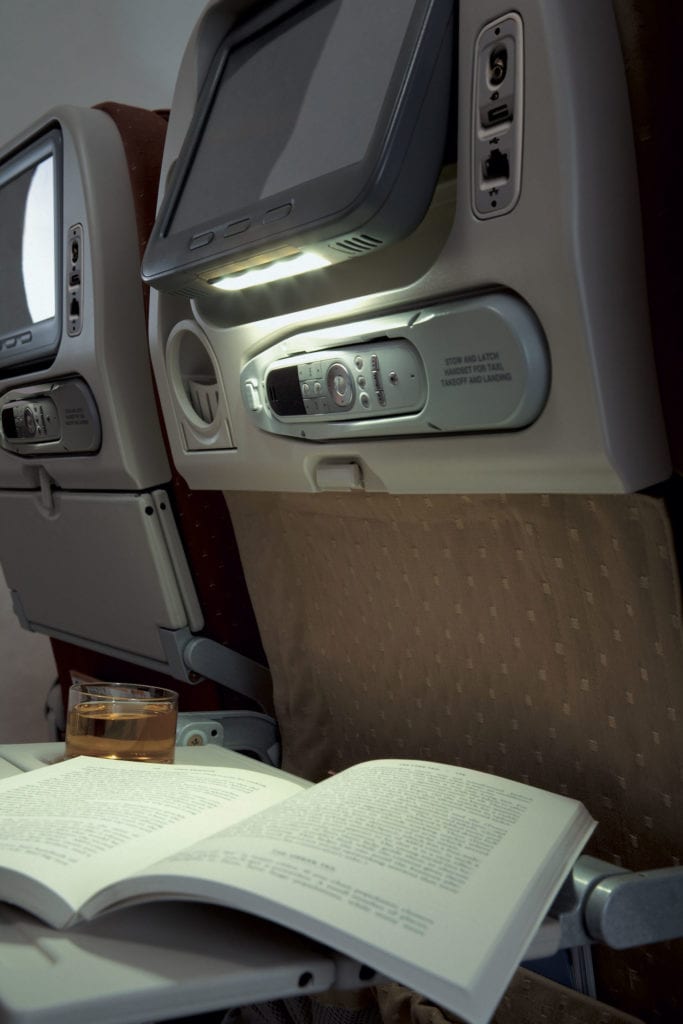
Singapore Airlines plans to connect its entire fleet, including the Boeing 777-300ER pictured here, connected by 2021. Photo: Singapore Airlines
Over the next two years, Singapore Airlines will look to install in-flight connectivity technology supplied by Panasonic and SITAONAIR, while also testing the use of virtual reality headsets for passenger entertainment, Ng Yung Han, the Asia Pacific carrier's vice president of product innovation told Avionics International during an interview ahead of the 2019 Airline Passenger Experience EXPO (APEX EXPO) in Los Angeles, California.
Singapore operates one of the world's largest and most diverse fleets of commercial airliners, including the Airbus A330, A350 and A380-800 as well as Boeing's 777-300ER and 787-10. Each of these different aircraft types feature cabin systems, embedded electronics and computing architectures that represent generational leaps in technology.
"By early 2020, our entire long-haul fleet will have in-flight connectivity; and by around mid 2021, 100 percent of our fleet, regional and long-haul will have Wi-Fi and GSM services. We are partnering IFE providers, Panasonic and Thales, for our in-flight entertainment; and Panasonic and SITAONAIR (using Inmarsat's satellite network) for in-flight connectivity," Yung Han said.
In 2018, Singapore launched its own personalized in-flight entertainment system called "KrisWorld" that is being retrofitted across its entire fleet of aircraft, a decision driven by the application's more personalized and customizable user interface. KrisWorld also reflects a major trend that airlines are using to establish increasingly wireless architectures in their cabins: create a centralized portal or network to host television shows, movies, gaming, and other applications that are refreshed with new content and features on a month-to-month basis.
Singapore Airlines was the industry's first airline to launch the Panasonic eX2 IFE system in 2006 and it then introduced a full suite of connectivity in 2012, after previously featuring Connexion by Boeing. They were also the launch customer for the full Panasonic eX3 system on the A350 in early 2016, and the first airline to offer Voyager 3D flight map with points of interest on the aircraft, according to Yung Han.
One future area where Singapore may also consider investment is the use of virtual reality, but not only from the passenger experience perspective, Yung Han said. However, having a cabin full of passengers suspended in augmented reality in such close proximity to each other is a reality that Singapore and other airlines adopting trials of VR headsets have to consider.
Several airlines are using the same company as Singapore Airlines to evaluate the use of virtual reality for IFE on passenger-carrying flights. Munich-based Inflight VR makes the headsets which are designed specifically for cabin environments with integration into cabin management systems and networks.

Singapore Airlines is testing the use of VR headsets developed by In-flight VR, pictured here, on select flights. Photo: In-flight VR
"Virtual reality technologies and tools have in more recent years made it possible for airlines and designers to test out new cabin concepts and explore space without having to wait for physical mock-ups. This has improved the design process and shortened development time considerably. The level of detail that VR can now be achieved also means it is possible for airlines to produce and introduce new cabin products to customers ahead of the physical completion of the real thing," Yung Han said.
"VR IFE in the cabin has also taken off recently with some earlier adopters in the market. We are closely monitoring development in this area, and our focus will be on how best we can bring in new technology and entertainment options for the benefit of our customers. The aircraft cabin is a unique environment and there are several considerations when we look at new products and concepts. Ultimately, we will be driven by what customers want as part of their journey with us."
 |
Want to hear more on aircraft connectivity applications? Check out the Global Connected Aircraft Podcast, where Avionics editor-in-chief Woodrow Bellamy III interviews airlines and industry influencers on how they're applying connectivity solutions. |

